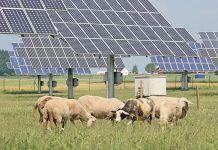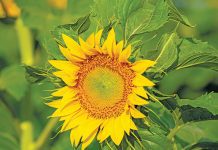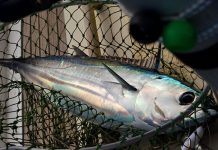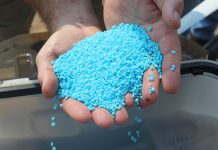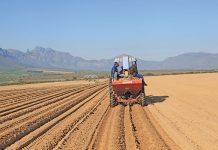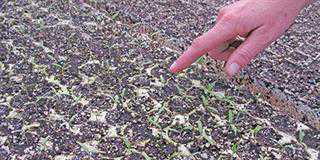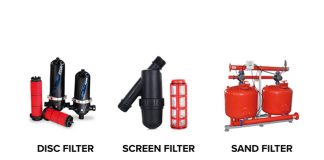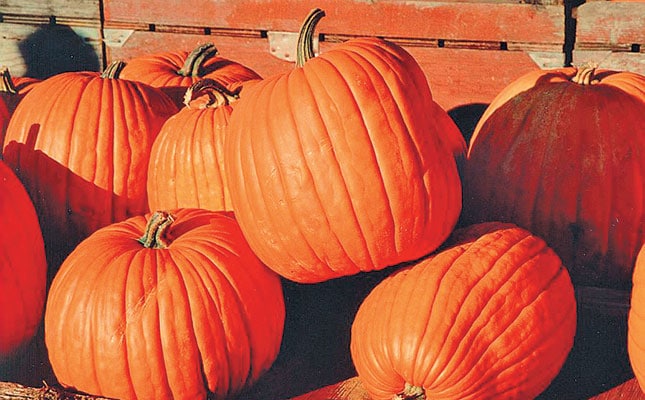
Pumpkins, squash, calabash, marrow, watermelons and cucumbers are all cucurbits, or members of the curbitaceae family (see Table below for a list of cucurbit types).
Table 1. Cucurbit types and cultivars |
||||
| Pumpkin/squash | ||||
| White Boer type/light grey: Flat White Boer Ford, Star 7001, Star 7022, Queensland Blue, Crown Prince |
||||
| Hubbards: Green hubbard, Chicago worted | ||||
| Patty pans: Patty pan, Sunburst, Sunny Delight | ||||
| Marrows: Caserta (home gardens), Salvador, Ambassador, Star 8022 | ||||
| Table squash: Table King, Table Queen butternut squashes: Waltham, Atlas Baby gem squash: Star 8001, Rolet | ||||
| Watermelons | ||||
| All Sweet: Charleston Grey, Congo, Crimson Sweet | ||||
| Evergreen: Empire, Jupiter, Odem, Sweet Baby, Sweet Princess | ||||
| Melons: Hales Best, Hemed, Honeydew, Honeydew, Green Flesh, Imperial 45, Lyon Jumbo, Saticoy |
Soil
The best results are obtained in loamy to sandy loam soils. Avoid heavy soils that do not drain well, as these can lead to fruit rot. The soil should be slightly acidic, but good results can be obtained with pH values between 6 and 7,5. If the soil is more acidic than pH 5,5, apply agricultural lime according to the soil analysis results. The ideal soil depth is 40cm.
Climate
Cucurbits are warm-season crops and grow best at temperatures of 23°C to 29°C by day and 15°C to 21°C at night. Growth virtually stops at temperatures below 10°C and the plants may be severely injured and maturity delayed by several days if the temperature drops below 5°C.
Crop rotation
Rotate cucurbits with crops from other plant families, such as legumes, to prevent the spread of disease.
Propagation
Cucurbits are usually direct-seeded when all danger of frost has passed. Plant two or preferably three seeds close to each other at the given distance within the row. More than one seed is used in order to ensure a good stand because cucurbit seedlings cannot normally be transplanted. Seedlings can also be made in peat pots or seedling trays with larger cavities. Muskmelons and watermelons are normally planted in this way to ensure early marketing.
Sowing time
September to November in mild areas. August to October in warm areas.
Soil preparation
Loosen the soil thoroughly by ploughing or using a hand hoe. All clods should be broken up until you obtain a deep, fine bed. Plant cover crops (green manure) and work them into the soil four to six weeks before establishing the crop. Irrigate the land thoroughly before planting.
Planting method
See Table 2 for spacing guidelines. Plant the seeds 3cm to 4cm deep. After two or three weeks, when the plants are growing well, thin the seedlings to a single plant.
Table 2. Spacing guidelines |
||
| Plant | Inter-row spacing | In-row spacing |
| Pumpkins | 2,1m to 2,7m | 50cm |
| Squashes (Butternut) | 1,2m to 1,8m | 50cm |
| Squashes (Little Gem) | 1,2m to 1,8m | 30cm |
| Cucumbers | 1,2m to 1,5m | 30cm |
| Watermelons | 1,8m to 2,4m | 50cm |
| Muskmelons | 1,5m to 2,0m | 30cm |
The seed should make good contact with the seedbed and be covered with dry soil (damp soil can be used, but it must not be so wet that it forms a solid layer on drying).
For the same reason, do not irrigate the seeds before emergence as this may cause a crust to form. Should it rain before emergence and a crust does form, keep the soil damp with light overhead irrigation so that the seedlings can grow through.
During hot weather, it is best to protect the soil surface from drying out by applying a mulch. After emergence, remove the mulch to prevent the development of spindly plants.

